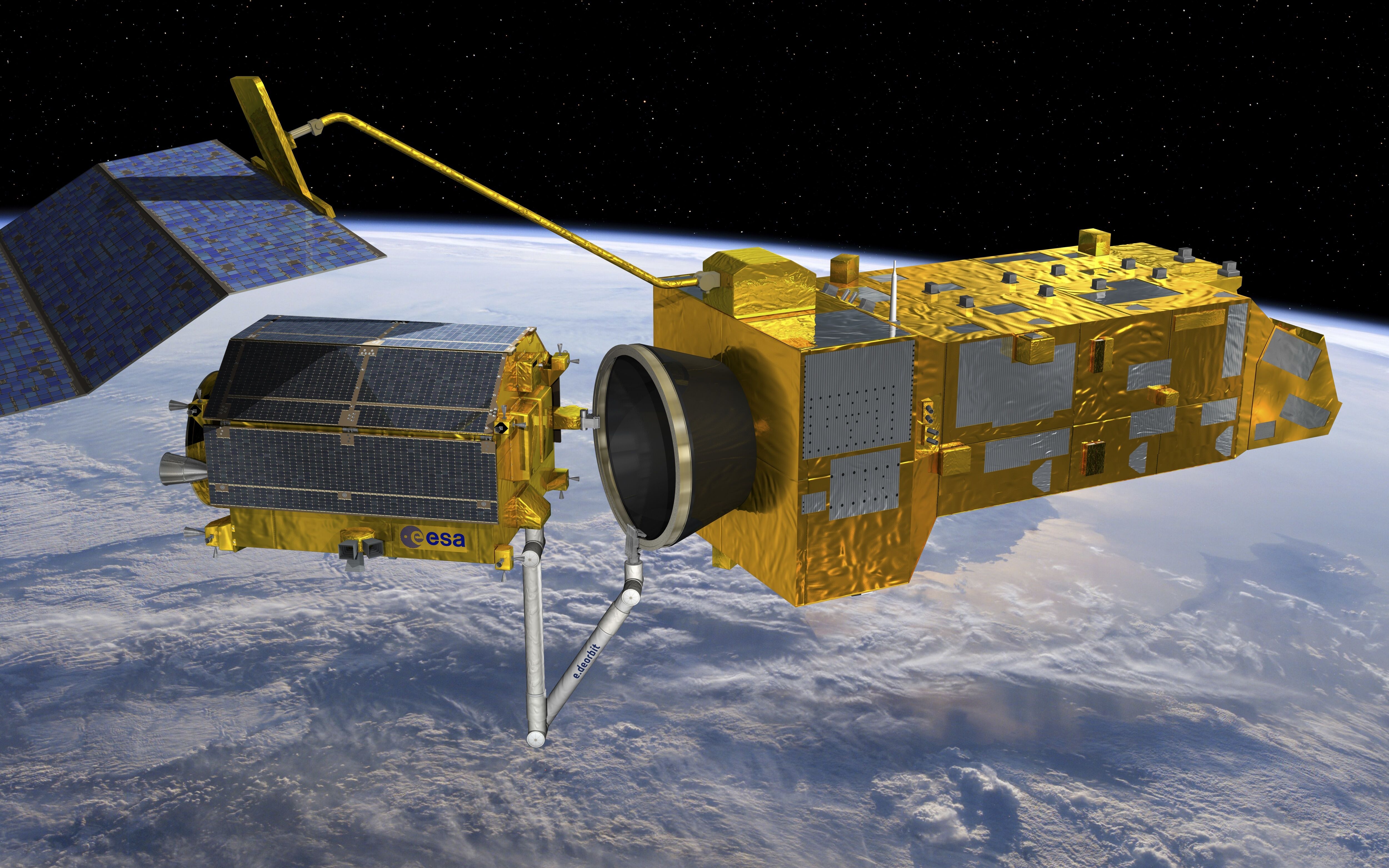
Clean Space
Testing satellite marker designs
Please sign in to download.
These infrared and phosphorescent satellite markers could help future space servicing vehicles home in on targets. Akin to landing lights for aircraft, ESA is developing infrared and phosphorescent markers for satellites, to help future space servicing vehicles rendezvous and dock with their targets. Developed by Hungarian company Admatis (http://www.admatis.com/eng/eng_index.htm) as part of an ESA Clean Space (https://www.esa.int/Our_Activities/Operations/Space_Safety_Security/Clean_Space) project, these markers would offer robotic space servicing vehicles a steady target to home in on, providing critical information on the line of sight, distance and pointing direction of their target satellite. Initial testing of these ‘Passive Emitting Material at end-of-life’ or PEMSUN markers took place at the end of March 2019 inside ESA’s GNC Rendezvous, Approach and Landing Simulator (http://www.esa.int/spaceinimages/Images/2018/05/GRALS_Testbed), part of the Agency's Orbital Robotics and Guidance, Navigation and Control Laboratory, at its ESTEC technical centre in Noordwijk, the Netherlands. “The idea itself is not new, but this is the first time we’ve manufactured and tested sample patches, cut into spacecraft multi-layer insulation covering,” comments ESA trainee Sébastien Perrault. “For the design we’ve looked into one larger pattern incorporating smaller versions for when the space servicing vehicle comes close enough that its camera’s field of view is filled. [LINK to second image – see below] “These markers would be very useful during eclipse states for instance, when Earth obscures the Sun in low Earth orbit, to allow the chaser vehicle to stay fixed on its target, potentially in combination with radio tags.” ESA is studying space servicing vehicles (https://www.esa.int/Our_Activities/Operations/Space_Safety_Security/Clean_Space/ESA_s_e.Deorbit_debris_removal_mission_reborn_as_servicing_vehicle) to carry out a wide range of roles in orbit, from refurbishment and refuelling to mission disposal at their end of life.

